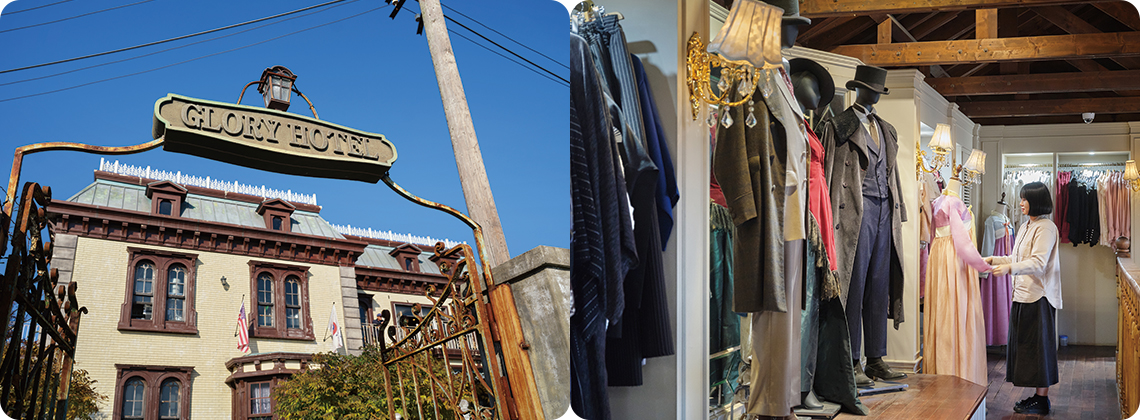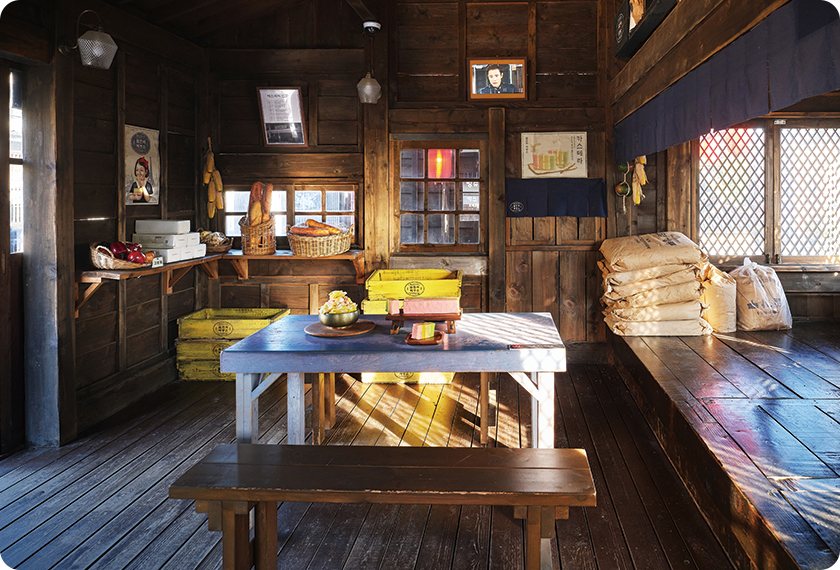In the early 1900s, foreign customs and cultures flooded into Korea. It was an era when Korea’s traditional culture blended with new architectural styles and clothing from around the world. The Sunshine Studio in Nonsan preserves the streets from that time, 120 years ago. Like stepping into the drama “Mr. Sunshine,” visitors can walk through scenes previously only encountered on screen.


Writer. Sung Ji Yeon
Stepping Back in Time
Nonsan is a tranquil city located in the heart of Korea. This city is home to a magical space called “Sunshine Studio” that transports visitors back about 100 years in time.
Sunshine Studio is a drama set that recreates Korean streets from the 1900s, when the country was actively embracing foreign customs and culture. It opened to the public as a tourist attraction after filming “Mr. Sunshine,” which was set during the Korean Empire period from 1900 to 1905. Since then, it has also served as the backdrop for “Pachinko,” set in the early 1930s during the Japanese colonial period, and the variety show “Great Escape.”
The studio’s beauty makes it a perfect backdrop for various dramas and other visual content broadcast on TV. Upon entering Sunshine Studio, visitors first encounter the fortress walls, below which lies a panoramic view of Hanseong (Seoul of that era). Red brick Western-style buildings, traditional Korean houses exuding tranquility, distinctive Japanese-style houses, willow trees and street scenes combine to create what looks like a scene from a fairy tale.

Exploring History Through Architecture
As a condensed recreation of Hanseong’s Jongno district from the 1900s, each building features remarkable attention to detail. For the best experience, visitors should explore the Glory Hotel, Hanseong Electric Co., Madang House Gobang and Dongmae’s House. These locations showcase the architectural styles of Korean, Western and Japanese buildings from the period, with most featuring special exhibitions.
The Glory Hotel, modeled after the Sontag Hotel (Korea’s first Western-style accommodation), captures the essence of the era. Inside, visitors find period-appropriate lavish furniture and decorations, alongside props used in “Mr. Sunshine.” The hotel screens highlight scenes from the drama, allowing fans to relive key moments while newcomers gain a deeper appreciation for the setting. The second-floor café offers a perfect rest stop, where guests can experience having tea in a historic hotel lobby and capture memories at the terrace’s photogenic spots.


To the left of Glory Hotel, where Hanseong’s alleys begin, stands a two-story Japanese-style house. The ground floor houses a pub, while the second floor recreates a character’s residence from “Mr. Sunshine.” Though its atmosphere differs markedly from that of the Glory Hotel, exploring the space reveals familiar scenes from the drama, aided by meticulously curated costumes and props throughout both locations.
Moving down the road, visitors encounter a condensed version of Jongno street. Two landmarks immediately catch the eye: Bosingak and Hanseong Electric Co. Bosingak, a historic bell tower, once announced time and national events during the Joseon Dynasty, while Hanseong Electric Company, established in 1891, was the city’s provider of electricity. The imposing Hanseong Electric Company building houses a special exhibition featuring “Mr. Sunshine” photographs, an exhibit about Hwang Ki-hwan (the inspiration for protagonist Eugene Choi), and flags from the Korean Empire period.
At the heart of the studio is a traditional Korean house, once the female protagonist’s home, now hosting the “Historical Story in the Drama” exhibition. Featuring eleven stories that compare dramatic scenes with historical facts, this compact yet authentic set recreates a noble family’s residence. Visitors remove their shoes to explore detailed rooms, where props invite them to step into the drama’s world, each corner resonating with the historical period it represents.

Making the Most of Your Visit
Visitors can enhance their experience at the studio in several ways. First, rent period costumes from the red brick Western building that serves as the costume rental shop. Options range from vintage Western-style outfits to traditional Hanbok and militia uniforms, complete with accessories, shoes and props like toy guns. This allows visitors to fully transform into drama protagonists.
Second, follow in the footsteps of drama scenes. The studio features various structures including the historically accurate “Hanseong Train,” the pivotal stone arch bridge from “Mr. Sunshine,” the “Pachinko” tailor shop and “Haedrio” pawnshop where the dramas’ characters lived. Wearing period costumes while recreating famous scenes and poses adds another dimension to the experience.
Third, stay until dusk. Though Sunshine Studio closes at 6 p.m., visiting during seasons when darkness falls around 5 p.m. offers a different perspective. The orange glow from period-appropriate streetlamps enhances the historical atmosphere and captures the poignant emotions of the era.
For an extended experience, visit the adjacent studio in Sunshine Land that recreates the 1950s post-war streets. This companion site, with its more modern buildings and distinctive atmosphere, offers visitors the unique sensation of traveling through different periods of Korean history.
As the Korean proverb says, “One view is worth a hundred words,” Sunshine Studio proves this wisdom true. Walking through the historical streets provides an experience that surpasses any media portrayal, sparking curiosity to look beyond the dramas. By stepping into Sunshine Studio, visitors expand their understanding of a pivotal period in Korean history through an immersive journey into the past.

